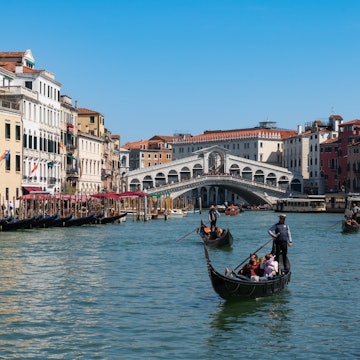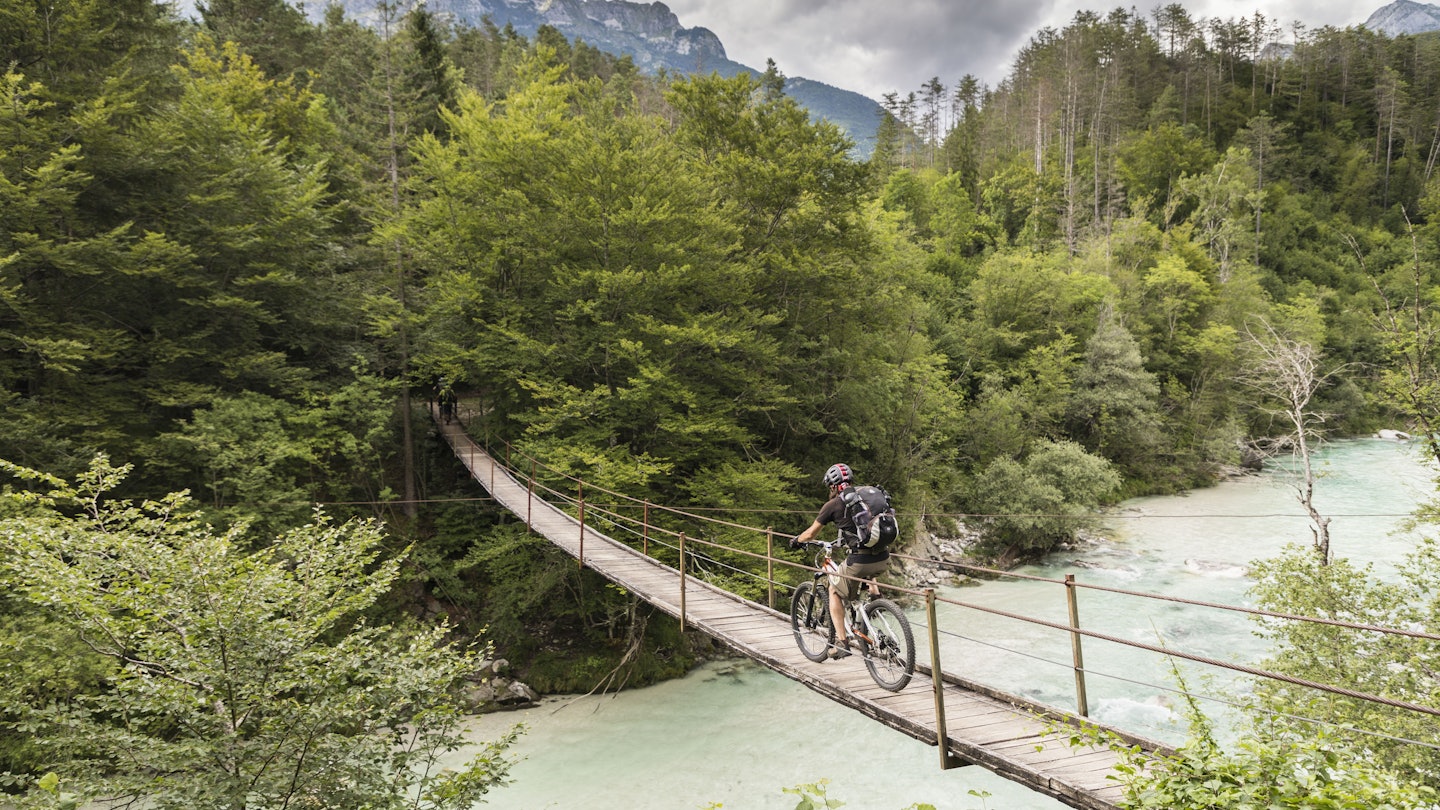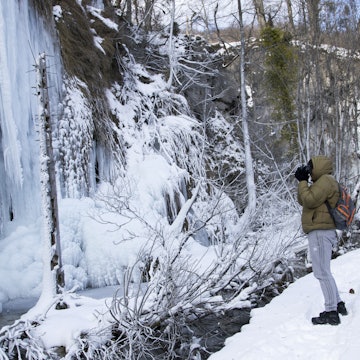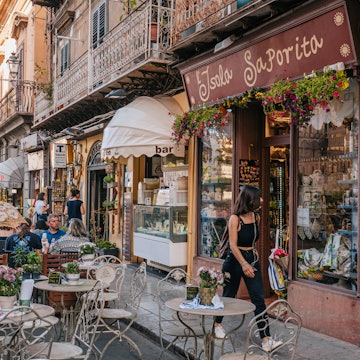
Everything you need to know about visiting Slovenia on a budget



Cycling and hiking in the Julian Alps is an excellent way to see Slovenia on a budget © Saro17 / Getty Images
Without question, you can spend plenty of money in Slovenia. In every corner of the country, there are enough high-end resorts, wellness centers, hotels, vineyards and restaurants to make any five-star visitor feel at home. But it's also an ideal destination for budget travelers.
General day-to-day prices remain relatively reasonable: a pint of beer, for example, costs about €3.50 and inter-city bus tickets run anywhere from €6 to €12. Plus, this Central European nation values a roll-up-your-sleeves approach to discovery, meaning walking between villages and cycling through regions is often the best way to experience all there is on offer.
Daily costs in Slovenia
Bed in a hostel dorm: €25-35
Basic hotel room for two: €70-100
Self-catering apartment (including Airbnb): from €60
Public transport ticket in Ljubljana city bus: €1.30
Coffee: €4
Sandwich: €7
Dinner for two in a mid-range restaurant: €40
Beer/pint at the bar: €3.50

For cheap flights, look to neighboring countries
Ljubljana Airport is the only game in town for flying directly to Slovenia but the airport has struggled to lure international carriers following the 2019 collapse of the national airline, Adria Airways. This means cheap or convenient connections can be hard to find.
A pro tip is to consider traveling to larger airports in countries that border Slovenia: Croatia, Italy, Austria and Hungary. Zagreb, for example, is just a 90-minute drive away, or two-and-a-half hours by train, and Venice has bus and train connections too. Both cities have busy international airports and better odds for flight deals.
Find out more about traveling around Europe by train in our expert guide.
Skip the funicular and walk up to Ljubljana Castle
Seeing Ljubljana’s historic castle is usually the first item on any visitor’s list. A funicular can whisk you up in a couple of minutes without breaking a sweat for €6 (per adult/return) but consider taking a walk up the guided path to the castle. Sure, it’s 20 minutes of huffing and puffing, but the views are great and it's completely free.

Opt for street food and picnics to save euros on food
Slovenian street food is cheap, filling and good. Look out for stands selling burek (flaky pastry, stuffed with meat or cheese) or tasty Carniolan sausages, served with mustard and a slice of bread.
Ljubljana’s sprawling Central Market, situated just off the Triple Bridge, is filled with shops and stalls selling farm-fresh meats, cheeses, bread, fruits and vegetables. It’s an ideal spot to plan a gourmet picnic.
On Friday afternoons from March to November return to the market area for the weekly “Open Kitchen” (Odprta kuhna), when restaurateurs set up truck-food-type stalls and offer their most popular dishes at reduced prices.
Plan your fancy meal at lunch, instead of dinner, for better prices
A splurge on a gourmet dinner is part of the fun of traveling to Slovenia, but on days when that’s not on the cards, plan to eat out at lunch instead. Many spots offer multi-course, set-price lunches that can be much cheaper than standard dinner menus – but equally delicious. Look for set lunches or daily specials noted on chalkboards, or simply ask the waiter for the special meal deals that day.

Scope out museums for possible discounts
Culture in Slovenia is priced to be accessible. Nearly every museum or attraction offers reduced prices for students and people over 65; many also offer special “family” discounts, for two adults and two children.
The Ljubljana Card, sold at tourist information centers or downloadable to your phone, includes free entry to many museums as well as unlimited travel on city buses, a free funicular to Ljubljana Castle and bus transfer to Ljubljana Airport.
Travel during shoulder season for big savings – and stellar weather
Although there's technically a high season for Slovenian tourism – June to September – this is year-round territory for travelers. For many, the best time to be here is shoulder season, from late April to June and late September to late October.
The weather for cycling and hiking is stellar, and pleasant temperatures and changing seasons add color to powerful panoramas in plateaus, rivers and lakes, as well as in the Julian Alps and along the Adriatic Sea. Prices are also lower, especially for lodging. There are fewer travelers, too, so you might even have the sights all to yourself.

Leave the car at home and get around by bus or train (or bike)
Slovenia’s transportation infrastructure of buses and trains is excellent and reliable. Provided you’ve left yourself a bit of time for getting around and are not planning to visit lots of out-of-the-way destinations, it’s perfectly feasible to make your whole trip car-free (and save on fuel, parking and tolls).
A one-way bus ticket from Ljubljana to Lake Bled runs about €6 and trips to the coast are not that much more. Frequent trains can take you across the country in just a few hours. If you have the gumption, you can also plan your trip around hiking and cycling. You won’t cover as many kilometers, but you’ll see more.
Take full advantage of free tours to see more for less
Wherever you are in the country, be sure to stop by the local tourist information center to inquire about free or discounted guided walking tours. While these are not usually completely free (the guides work for tips), you’ll learn more about the area than you'd ever discover on your own, and the guides are happy to offer other cost-saving suggestions. Several guiding companies operate in Ljubljana, with tours often structured around themes like architecture, life under communism, etc.















